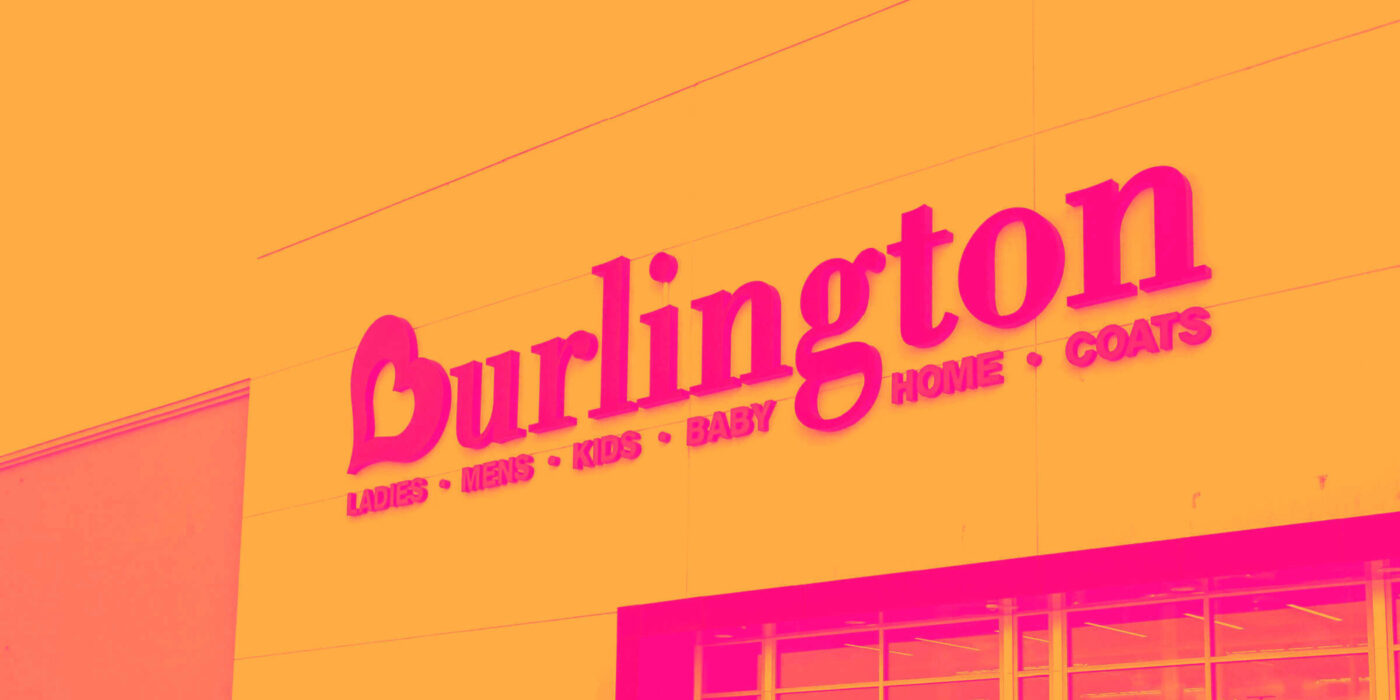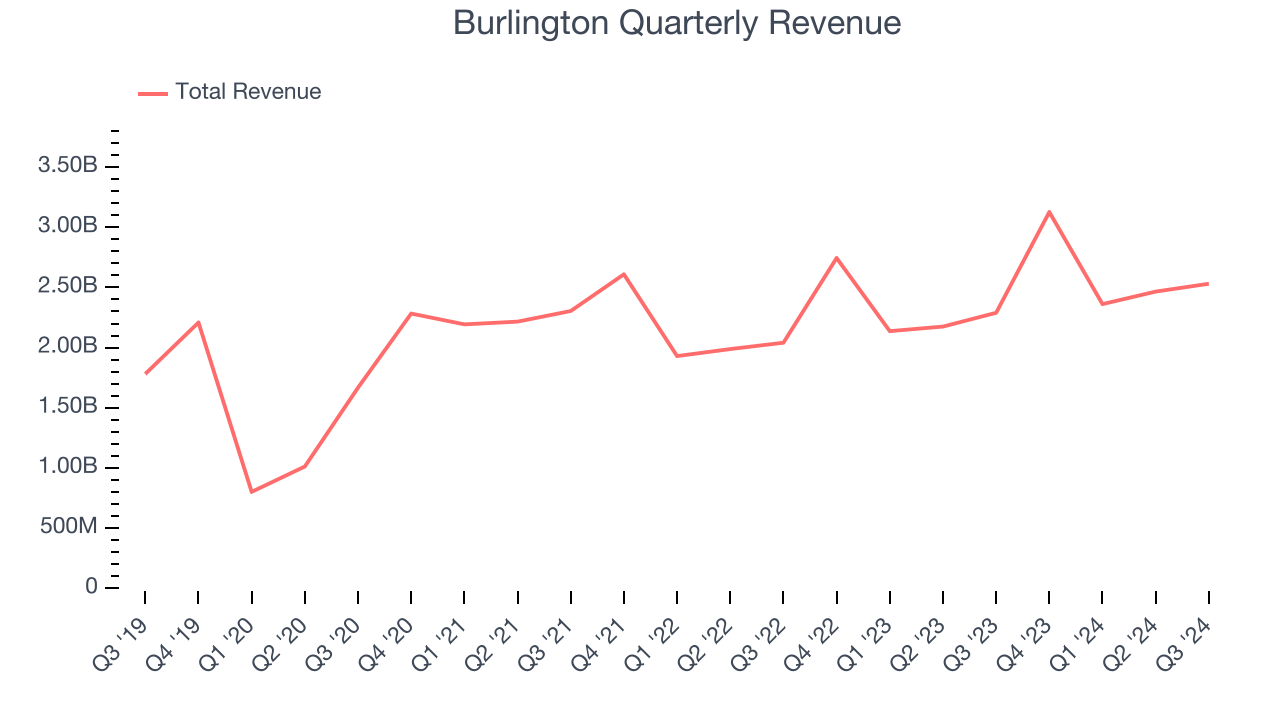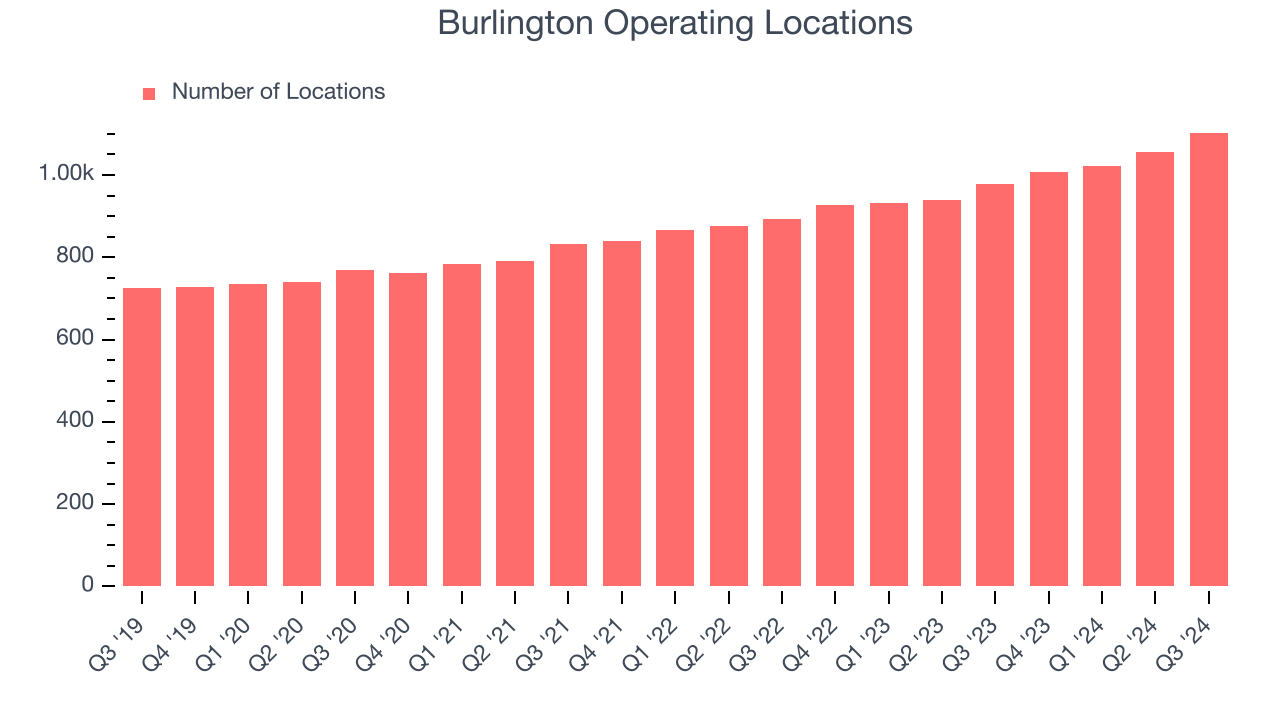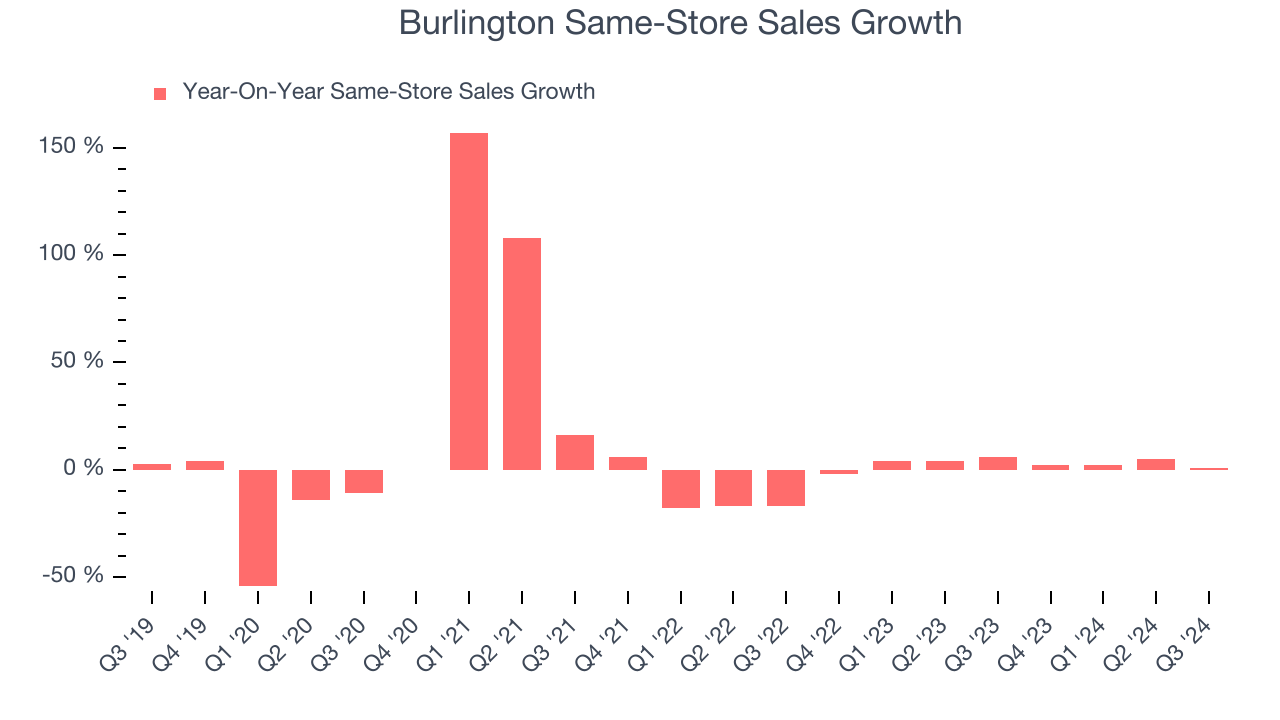
Off-price retail company Burlington Stores (NYSE: BURL) missed Wall Street’s revenue expectations in Q3 CY2024, but sales rose 10.5% year on year to $2.53 billion. Its non-GAAP profit of $1.55 per share was in line with analysts’ consensus estimates.
Is now the time to buy Burlington? Find out by accessing our full research report, it’s free.
Burlington (BURL) Q3 CY2024 Highlights:
- Revenue: $2.53 billion vs analyst estimates of $2.56 billion (10.5% year-on-year growth, 1% miss)
- Adjusted EPS: $1.55 vs analyst estimates of $1.55 (in line)
- Adjusted EBITDA: $228.8 million vs analyst estimates of $231.7 million (9% margin, 1.2% miss)
- Management slightly raised its full-year Adjusted EPS guidance to $7.86 at the midpoint
- Operating Margin: 8.7%, up from 3.8% in the same quarter last year
- Free Cash Flow was -$56.22 million, down from $120.7 million in the same quarter last year
- Locations: 1,103 at quarter end, up from 977 in the same quarter last year
- Same-Store Sales rose 1% year on year (6% in the same quarter last year)
- Market Capitalization: $18.37 billion
Michael O’Sullivan, CEO, stated, “Our third quarter comp trend started out very strongly, but then warmer temperatures from mid-September onwards slowed our sales momentum. Cold Weather categories represent about 15% of sales in the third quarter. Excluding these categories, our comp growth in the third quarter was 4%, which is consistent with the trend that we have seen in our business since March. We are very encouraged by this underlying comp sales trend.”
Company Overview
Founded in 1972 as a discount coat and outerwear retailer, Burlington Stores (NYSE: BURL) is now an off-price retailer that has broadened into general apparel, footwear, and home goods.
Discount Retailer
Discount retailers understand that many shoppers love a good deal, and they focus on providing excellent value to shoppers by selling general merchandise at major discounts. They can do this because of unique purchasing, procurement, and pricing strategies that involve scouring the market for trendy goods or buying excess inventory from manufacturers and other retailers. They then turn around and sell these snacks, paper towels, toys, clothes, and myriad other products at highly enticing prices. Despite the unique draw and lure of discounts, these discount retailers must also contend with the secular headwinds of online shopping and challenged retail foot traffic in places like suburban strip malls.
Sales Growth
A company’s long-term sales performance can indicate its overall quality. Any business can put up a good quarter or two, but many enduring ones grow for years.
Burlington is a mid-sized retailer, which sometimes brings disadvantages compared to larger competitors benefiting from better economies of scale.
As you can see below, Burlington’s sales grew at a mediocre 8.2% compounded annual growth rate over the last five years (we compare to 2019 to normalize for COVID-19 impacts), but to its credit, it opened new stores and increased sales at existing, established locations.

This quarter, Burlington’s revenue grew by 10.5% year on year to $2.53 billion, falling short of Wall Street’s estimates.
Looking ahead, sell-side analysts expect revenue to grow 8.8% over the next 12 months, similar to its five-year rate. This projection is admirable and indicates the market sees some success for its newer products.
Today’s young investors won’t have read the timeless lessons in Gorilla Game: Picking Winners In High Technology because it was written more than 20 years ago when Microsoft and Apple were first establishing their supremacy. But if we apply the same principles, then enterprise software stocks leveraging their own generative AI capabilities may well be the Gorillas of the future. So, in that spirit, we are excited to present our Special Free Report on a profitable, fast-growing enterprise software stock that is already riding the automation wave and looking to catch the generative AI next.
Store Performance
Number of Stores
A retailer’s store count often determines how much revenue it can generate.
Burlington sported 1,103 locations in the latest quarter. Over the last two years, it has opened new stores at a rapid clip and averaged 9.8% annual growth, among the fastest in the consumer retail sector. This gives it a chance to become a large, scaled business over time.
When a retailer opens new stores, it usually means it’s investing for growth because demand is greater than supply, especially in areas where consumers may not have a store within reasonable driving distance.

Same-Store Sales
A company's store base only paints one part of the picture. When demand is high, it makes sense to open more. But when demand is low, it’s prudent to close some locations and use the money in other ways. Same-store sales provides a deeper understanding of this issue because it measures organic growth at shops open for at least a year.
Burlington’s demand has been healthy for a retailer over the last two years. On average, the company has grown its same-store sales by a robust 2.8% per year. This performance suggests its rollout of new stores could be beneficial for shareholders. When a retailer has demand, more locations should help it reach more customers and boost revenue growth.

In the latest quarter, Burlington’s same-store sales rose 1% year on year. This was a meaningful deceleration from its historical levels. We’ll be watching closely to see if Burlington can reaccelerate growth.
Key Takeaways from Burlington’s Q3 Results
We struggled to find many resounding positives in these results. Its EPS guidance for next quarter missed and its revenue fell slightly short of Wall Street’s estimates. Overall, this quarter could have been better. The stock traded down 4.7% to $278 immediately following the results.
Burlington’s earnings report left more to be desired. Let’s look forward to see if this quarter has created an opportunity to buy the stock. If you’re making that decision, you should consider the bigger picture of valuation, business qualities, as well as the latest earnings. We cover that in our actionable full research report which you can read here, it’s free.





